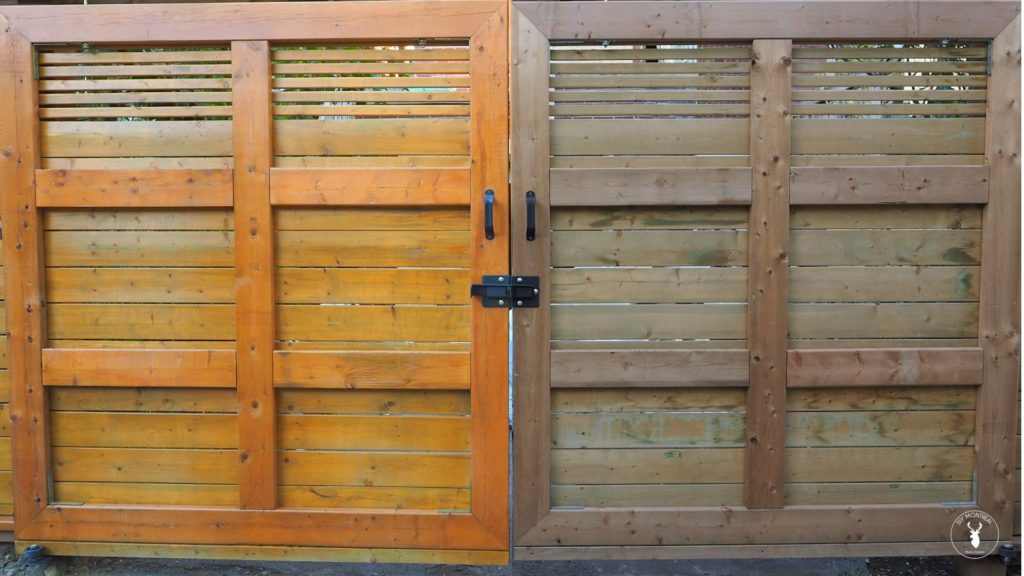It’s amazing how great a brand new fence looks but how quickly the wood dries out and looks dull. Before you know it the sun, snow and rain have their way and your fence looks weathered and gray.
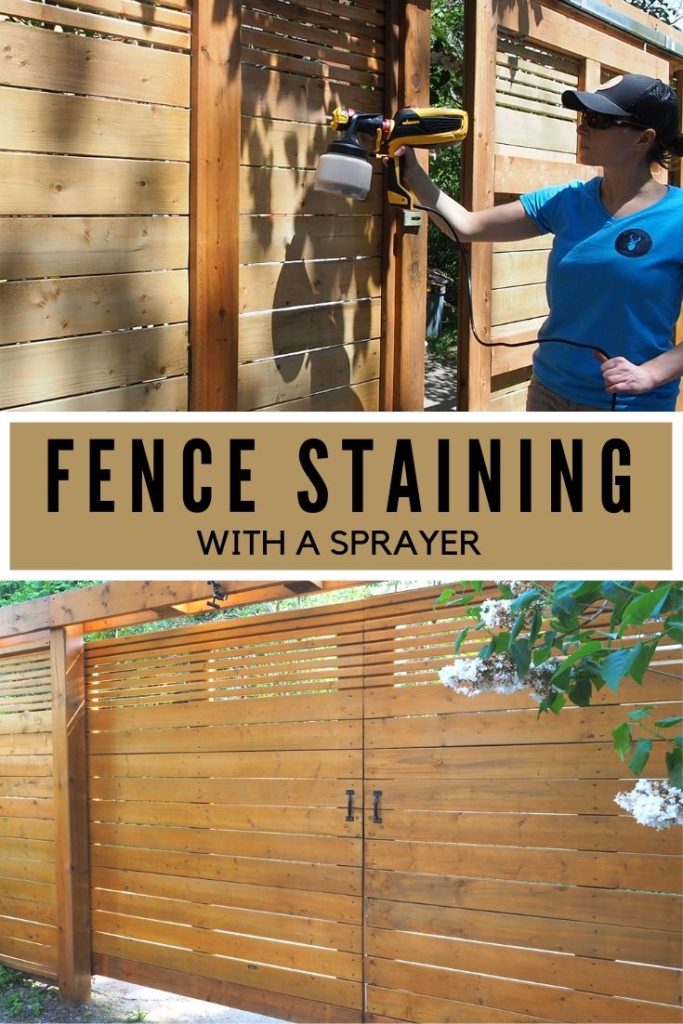
Restoring a fence with a new coat of stain is an easy DIY project anyone can do, but doing it with a sprayer is 10 times faster and just plain fun!
My fence was installed last year so it still looks great, but I want to apply a protective coat to keep it looking that way. Even though it’s a relatively new fence, it still needs to be cleaned before applying stain, just like any fence does.
Tools & Materials
With a closer look, you can see some watermarks and stains. But even if there weren’t any visible stains, it’s really important to first clean the fence. It’s tempting to skip this step, but if you do, your new stain might look great at first, but won’t last very long.
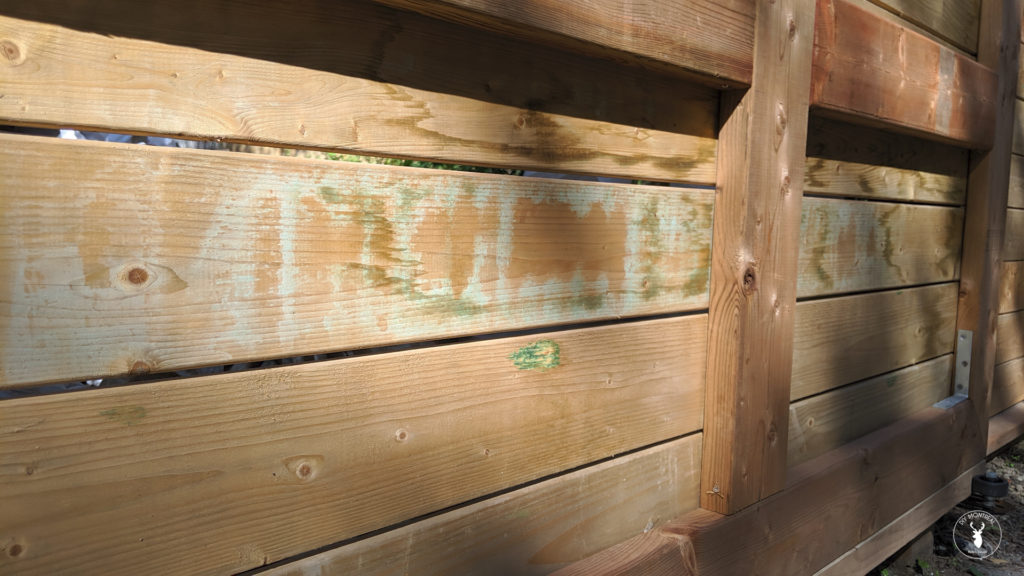
You can use a power washer, but I don’t recommend it, as power washers can actually do more harm than good and tend to raise the wood fibers leaving a rugged surface. Instead I’m going to use a wood cleaner as per the manufacturer’s recommendations.
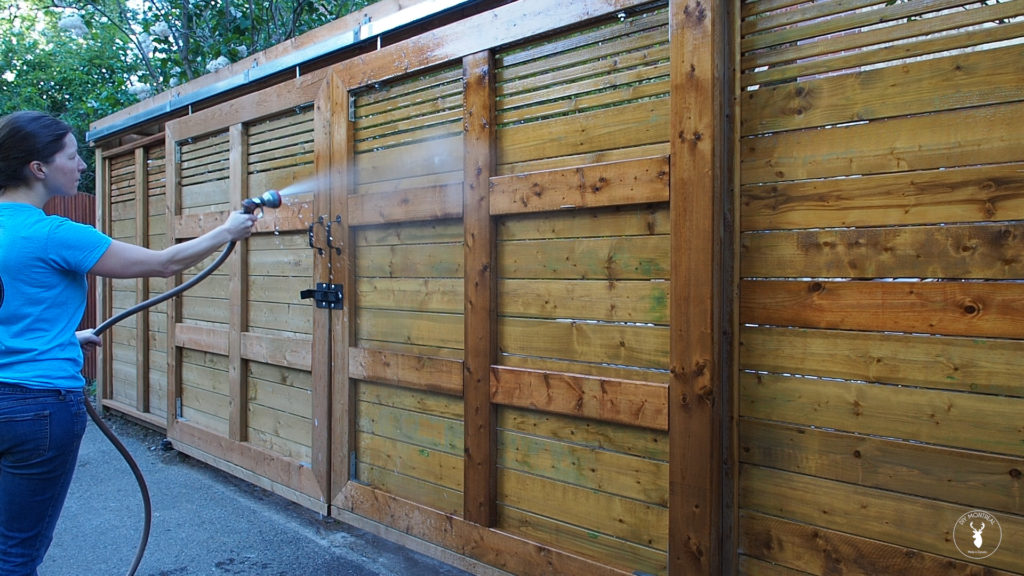
After hosing down the fence, I filled my paint sprayer half way up with some water and filled the other half with this wood cleaner. I figured if I could use my sprayer for staining, I could certainly use it for cleaning too.
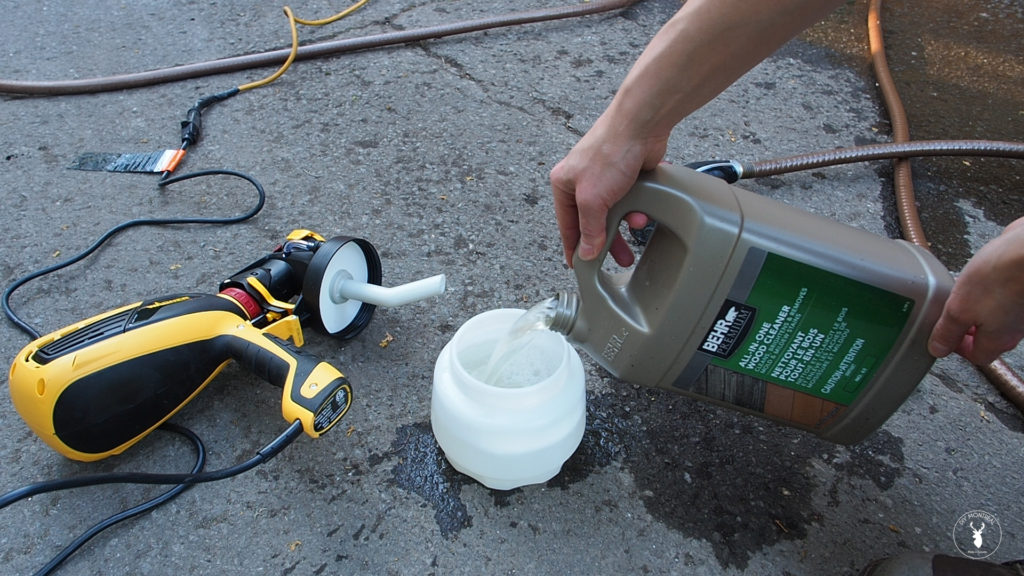
I liberally applied the cleaning solution to the fence, not really concerned with the spray pattern at this point since my goal is just to flood the surface. As you can see, it goes on pretty fast. I wasn’t wearing a mask in this shot, but it wasn’t long until I grabbed my respirator and my safety glasses. Even though this cleaner says its biodegradable, it still contains an acid that can irritate the skin.
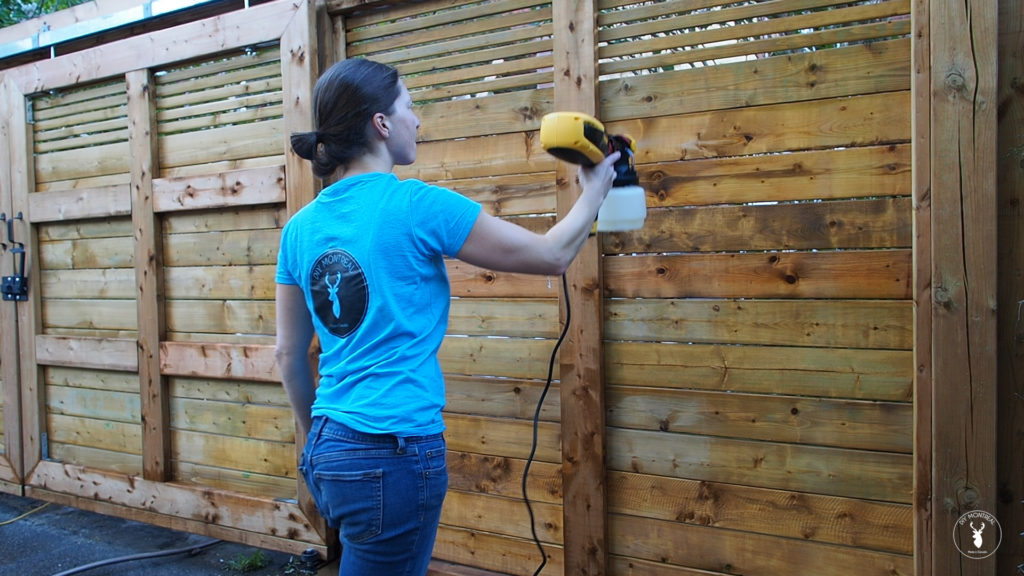
After spraying one section of fence, I used a stiff bristle brush to scrub each board one by one. I must say, this is probably the most tedious part of this entire project, but ultimately worth it if you want the stain to last. It’s important to keep the fence wet during the cleaning process, so I washed one section at a time, fully rinsing off all the cleaner with a hose before moving onto the next section.
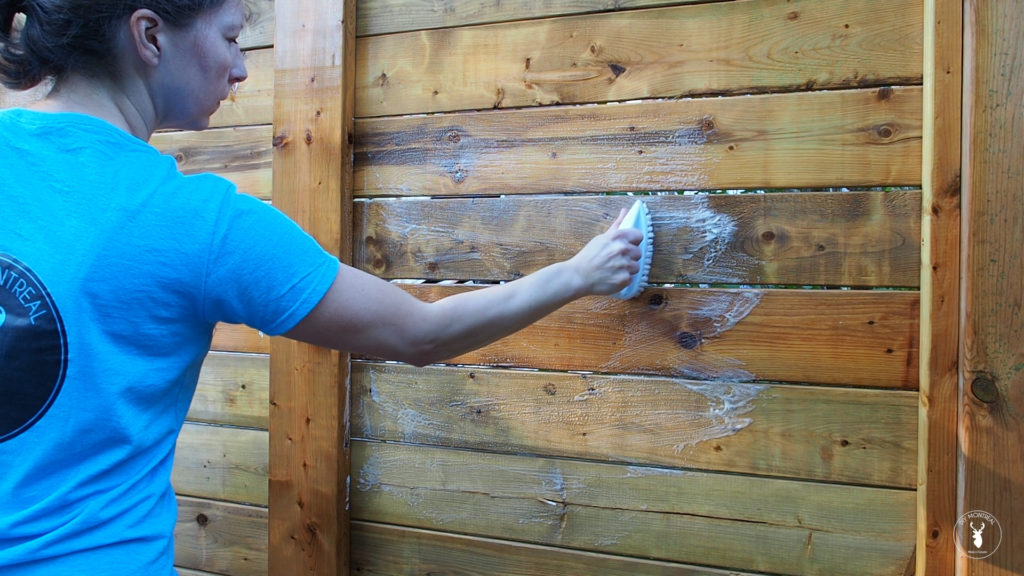
Before moving onto to staining, I let the fence fully dry for 48 hours and at this point it’s looking better already!
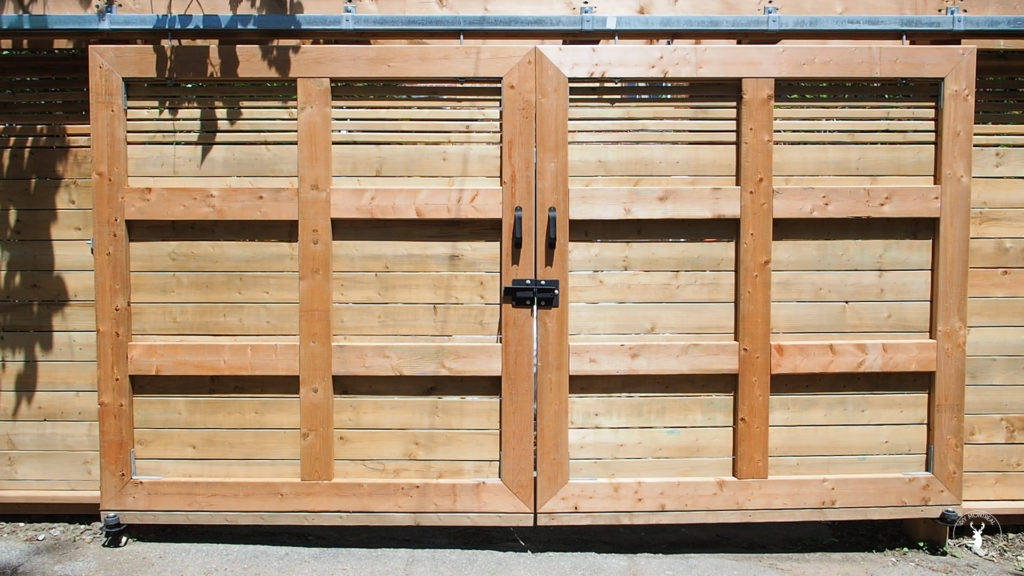
Since the fence is in good condition, I’m using a water based clear coat protective finish, just to give it that weather protection, without adding any color. I’m using my new Flexio 3000 sprayer by Wagner that comes ready to use right out of the box. Just need to fill the container and plug it in. This sprayer comes with a wide angle spray nozzle specifically made for fences, so I’m looking forward to testing it out.
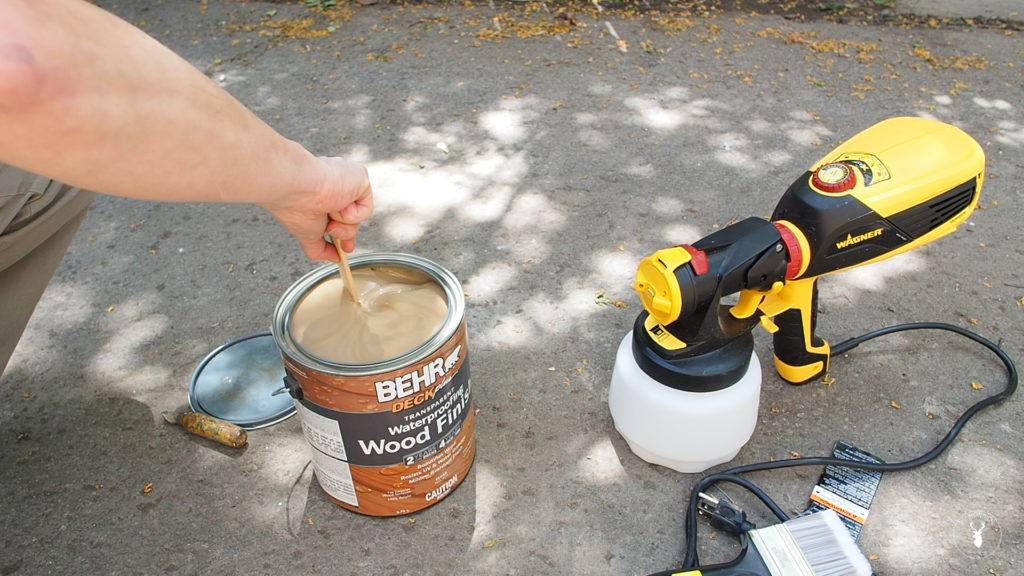
I should mention at this point that any hardware, plants or adjacent structures should be covered to protect them for the stain. Since I was using a clear coat I threw caution to the wind and skipped that step. What’s the expression- Do as I say and not as I do?
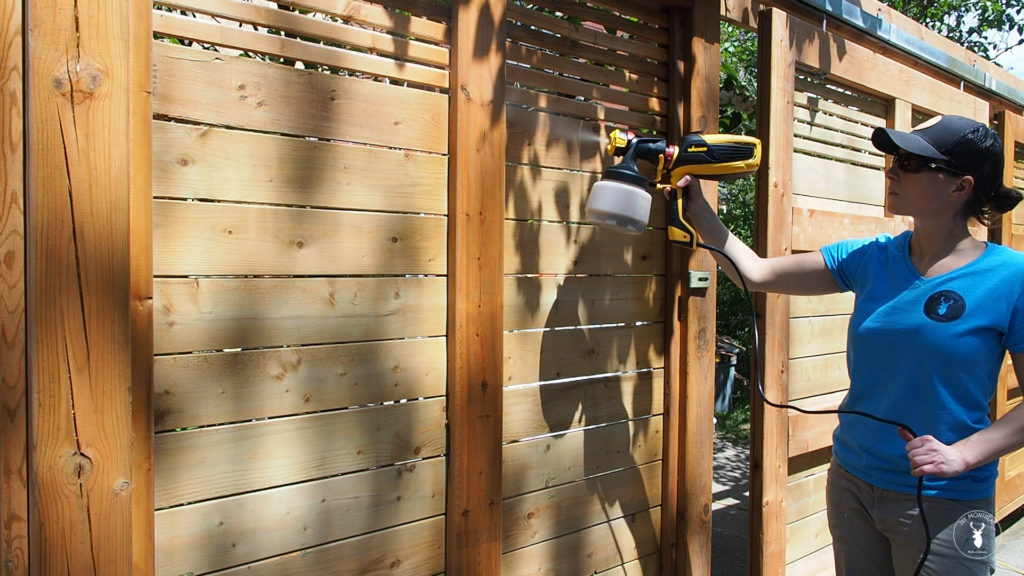
I started by coating all the vertical boards, before flipping the nozzle to the horizontal position and working on the horizontal boards. I worked the fence one section at a time, going with the direction of the grain, making sure to slightly overlap each pass. In the beginning, I had to adjust the spray settings a couple times in order to dial it in just right. But really, it’s really pretty intuitive. It only took me about a minute and a half to fully coat one fence panel.
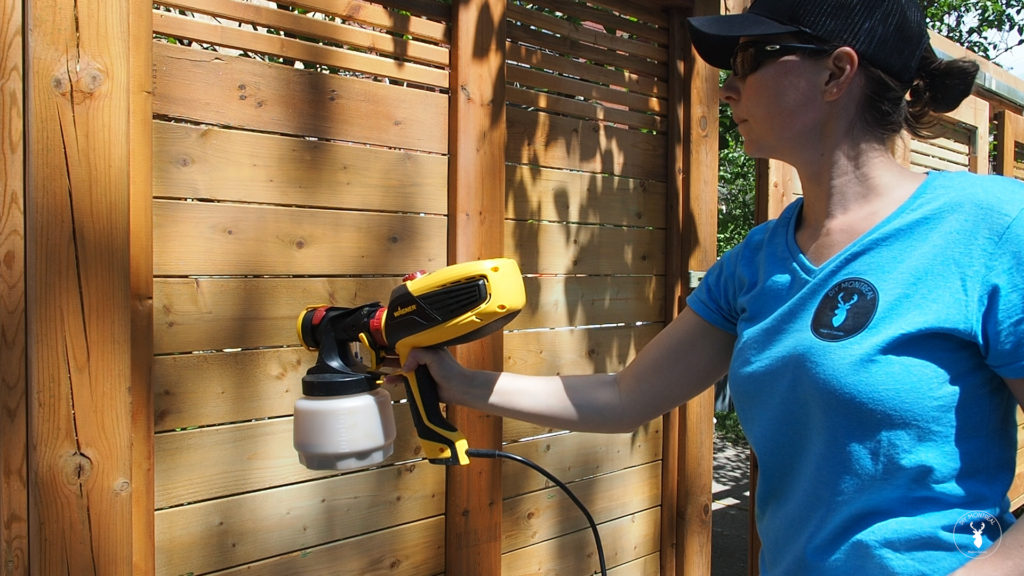
Once a panel was fully coated I used a synthetic paint brush to back-brush the stain into the fence. This helps the stain penetrate the wood rather than sitting on top and also avoids any runs. The stain dries really fast when sprayed on, so you really need to alternate between spraying and brushing while the stain is still wet.
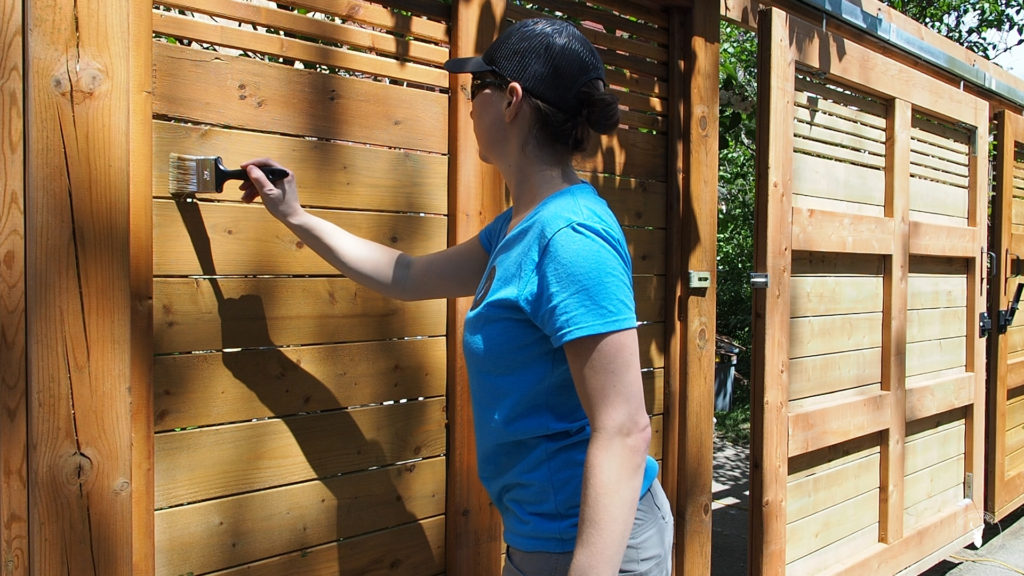
I worked my way across the fence like this, one panel at a time, until the fence was fully covered. You can already see the difference it makes after just one coat.
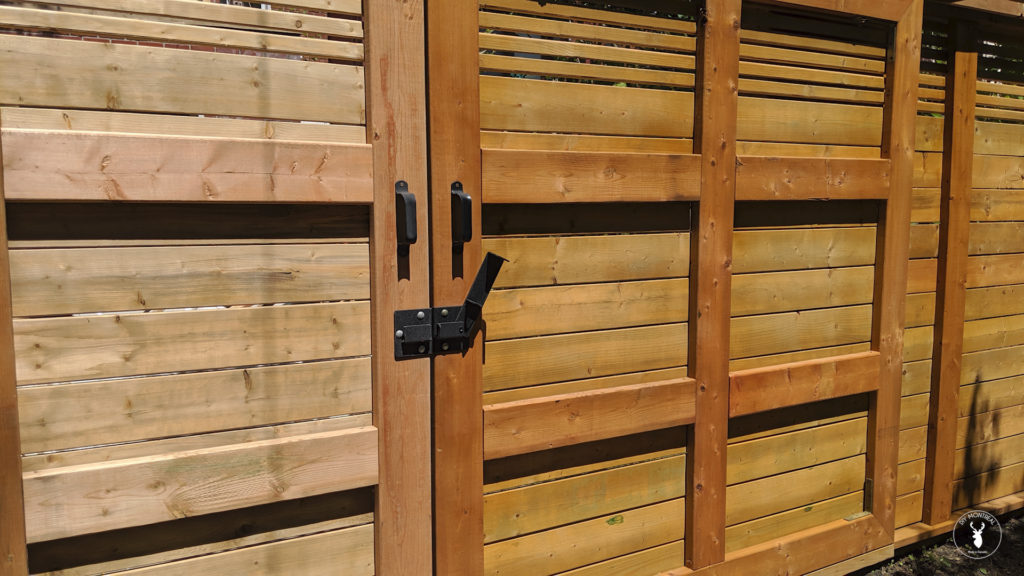
After letting the first coat dry for 2 hours, I applied the second coat. I repeated the exact same application process, spraying one panel at a time and immediately back-brushing the stain using a paint brush.
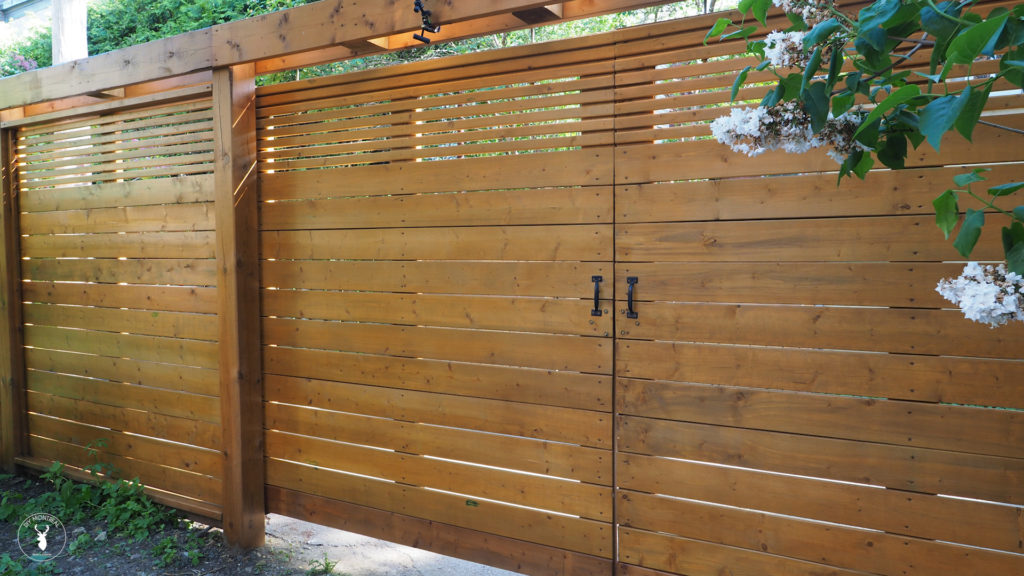
And that’s it! When all is done, it looks pretty great!
